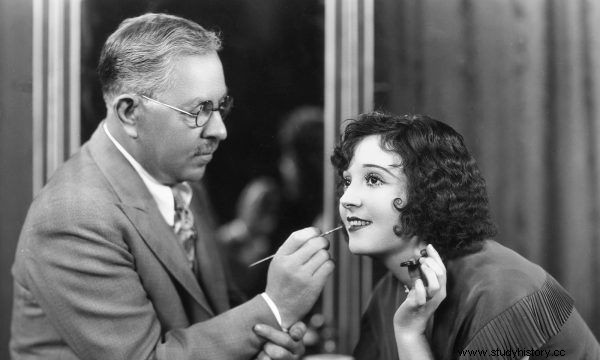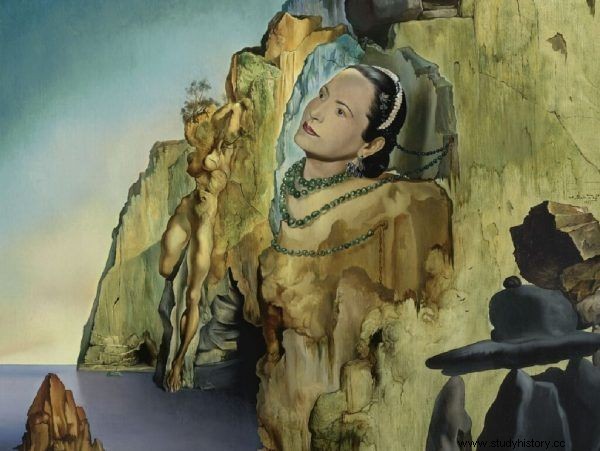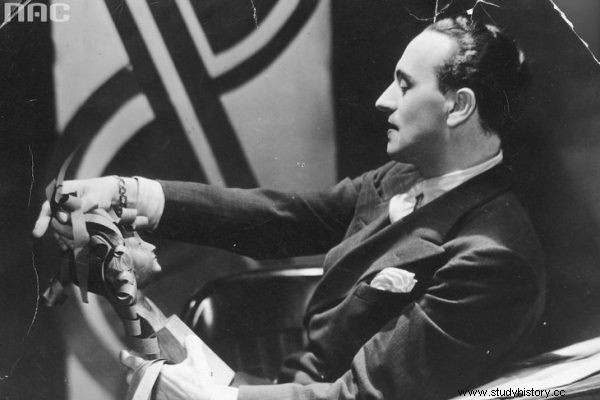Visionaries, revolutionists, creators of rules that changed our everyday appearance. To this day, their names are a symbol of innovation and great success, and their products have changed the way we perceive a woman's appearance. Here are the four Poles who revolutionized beauty.
The history of widely understood beauty is full of wonderful names - icons. However, we do not always remember that Poles were also among the stars who revolutionized the industry. You will be surprised which famous personalities come from our country!
Max Factor
Maksymilian Faktorowicz was born in Zduńska Wola and from an early age he had to support the home budget with his own work. He started out selling snacks in the theater, then he was an assistant pharmacist, and from there, at the age of 9, he went to a wig maker in Łódź. He opened the door to the world of makeup and cosmetics for little Max, which changed the boy's fate.
Further paths led Faktorowicz to Tsarist Moscow and the dressing room of the famous Bolshoi Theater. He worked for him until his eighteenth birthday, after which he completed his compulsory military service in the Russian army. And here luck was on his side, as he was assigned to the hospital corps. During the service, he therefore had the opportunity to broaden his knowledge of skin diseases, which he used in his later career.

Maksymilian Faktorowicz created one of the most famous cosmetic brands in history
After leaving the service, Maximilian opened a cosmetics store in a suburb of Moscow. He sold hand-made creams, blushes, perfumes and wigs there. The products enjoyed great popularity, which attracted the attention of the tsarist family. Faktorowicz was appointed court cosmetologist of the Romanovs.
There was a lot of money behind this great distinction, but also a great restriction of freedom. Maximilian did not want to spend the rest of his life as a pawn controlled by the tsar. Therefore, he decided to take a dangerous step - to escape to the New World, in which he took with him the family he secretly founded.
The new country has already been welcomed as Max Factor. In America, he initially struggled with a series of defeats. First, he was cheated by an accomplice and lost all his money, and then his wife died unexpectedly.
However, fate changed for Factor with his departure to Los Angeles, where the film industry was thriving. Max found himself in the world of make-up, delighting movie stars and viewers with his innovative solutions and products. Thus, in 1909, the first line of Max Factor cosmetics was created. A new dimension of female beauty has emerged.
Max continued to improve his products as well as the methods of their application. In this way, he created the principle of color harmony, which is still used by makeup artists today. It consists in highlighting the natural colors of the skin, eyes and hair with cosmetics.
Thanks to his hard work, not only did he create a family empire, which his son Frank took over after his death, but also secured his place in the history of cinema . In 1929 he was awarded an Oscar for his contribution to the make-up field.
Helena Rubinstein
The Empress of Beauty - this is what the world referred to as a short woman from Kraków who, due to her resolute and imperious character, has become one of the most influential women in the cosmetics industry.
Against the tradition of arranged marriages, the then still Chaja Rubinstein was sent to her uncle in Australia. There she got a job in a pharmacy, where she discovered her calling.
The climate of the new continent was not conducive to caring for the complexion. In order to keep her porcelain skin flawless, Helena uses her mother's recipes, which she perfected with the knowledge obtained in the pharmacy . After months of experimenting, she created the "Valaze" cream.

Helena Rubinstein was portrayed by Salvador Dali
The product, which was a vivid advertisement for Helena's complexion, was selling like hot cakes. Australians were delighted with the cosmetic, and Rubinstein saw the opportunity and took full advantage of it.
In consultation with the best European dermatologists and chemists, she began to create new products and think about conquering new markets. Together with her husband, Edward W. Titus, she went to London, where she won the hearts of British women with her cosmetics and beauty salon. From there, she set off for Paris, where she also achieved success. Until she ended up in New York, where her company turned into a world empire, and she became one of the richest women in the world.
Helena Rubinstein's products have become a phenomenon that has changed the approach of women to care. It was she who introduced her clients to a cream with a filter or waterproof mascara. She also pointed out that "there are no ugly women, they are just lazy" and encouraged daily care, thanks to which she herself kept an almost flawless appearance.
Antoni “Antoine” Cierplikowski
Antoni Cierplikowski is known in the beauty world as the king of hairdressers, whose services were used by both crowned heads and the greatest Hollywood stars. Its beginnings were humble. Born as the fifth of six children of an Sieradz shoemaker and seamstress, he showed creativity from an early age, especially playing with his sisters' hair. He tame their wayward hairstyles with the help of honey, which attracted the attention of Mrs. Cierplikowska. Considering her son's good future, she handed him over to relatives living in Łódź. They had a hairdressing salon where young Antek could take his first steps in a profession, which very quickly became his great passion and a ticket to a better world.
In 1901, escaping from conscription to the tsarist army, Cierplikowski left for Paris, where his talent was noticed by the French. Among them was Ève Lavallière. In 1909, this 40-year-old actress was selected for the role of the teenage Joanna d'Arc. They want to fall out as reliably as possible, she went to Cierplikowski, already known then as Antoine, and asked for help in rejuvenating.

Antoni "Antoine" Cierplikowski launched a "tomboy"
Antoine decided to take a bold step by cutting the client's hair short, which achieved the desired effect. The hairstyle he created was called "à la garçonne" meaning "for a tomboy" and became a turning point in his career. The success it brought him allowed Cierplikowski to create the first beauty salons with exclusive interiors in which women felt like real goddesses. In total, the name "Antoine de Paris" was signed by over 120 stores on four continents.
He was also famous for his famous clients, including:Marlena Dietrich, Greta Garbo, Pola Negri, Mata Hari, Edith Piaf, Betty Davies, Josephine Baker and Brigitte Bardot. Antoine also worked for the British Monarchy, overseeing the work of hairdressers in preparation for the coronation of George VI, and later his daughter, Elizabeth II.
Unfortunately, the end of his life brought trouble, forcing Cierplikowski to return to Sieradz, where he spent his last years and was buried.
Barbara Hulanicki
Born in Warsaw, at the age of two, she left with her parents for Jerusalem, where her father began working as a consul general. The outbreak of World War II and the changes that followed stopped the Hulanicki family in the Middle East. Those were bright years for little Basia and her two younger sisters, who ended with the unexpected death of her father.
Witold Hulanicki was murdered at the behest of the nationalist Zionist organization Lehi. As a result of these events, Barbara's mother decided to move to Great Britain, where her wealthy sister lived.
In the new country, Barbara discovered a fascination with the world of fashion. She enrolled in this field at Brighton University, and after graduating, she moved to London to further her career. She started working as a fashion illustrator for magazines such as Vogue, Daily Express and Woman's Mirror. This work allowed her to go to the Paris shows of houses such as Balenciaga and Givenchy.
Inspired by the French taste and approach to style, with the support of her husband, Hulanicka decided to design clothes. At the beginning of the 1960s, English women were considered to be one of the worst-dressed women and Barbara decided to change this state. She opened a mail order shop that she named after her youngest sister, Bib.
A characteristic feature of her designs was an affordable price, colors based on natural colors and short dresses. It was one of them that turned Biba into a fashion symbol of the 60's.
In 1964, a pink checked mini dress, designed by Hulanicka, was published on the Daily Mirror website. The British women were so impressed with the creation that on the following day Biba received 14,000 orders for it. This event changed the fate of Barbara.
In a very short time, she could afford to open a boutique on Abingdon Road, where shopping was done, among others, by Twiggy, Mia Farrow, Cher, Brigitte Bardot, The Beatles or Mick Jagger. It was not only a place to sell clothes, but also to meet young people, including artists.
For almost a decade, the store set trends, perfectly fitting into the cultural and social transformations of the time. This made Biby an icon that designers and stylists still use today.
